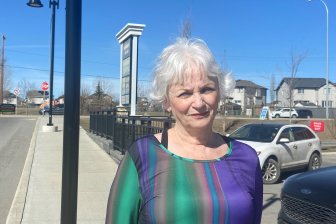ABOVE: The sixth instalment of The West Block’s series The Big Idea, in which we look beyond the daily political skirmishes. Here, we engage in a broader and more engaging discussion of our potential as a nation and a people.

TORONTO – Jennifer Keesmaat, chief planner for the City of Toronto, has a Big Idea: A sweeping national urban agenda to address growing problems in transit gridlock and housing affordability in Canada’s largest cities.
“I believe, passionately, that we could embrace an urban agenda recognizing that our cities are critical international players, our cities drive economic growth, and our cities are critical to the integration of new immigrants, which is a key part of our culture as a country,” said Keesmaat on The West Block with Tom Clark.
Gridlock costs Toronto over $3 billion every year, according to Keesmaat. Toronto isn’t alone – other major Canadian cities such as Montreal, Calgary, Edmonton and Vancouver face similar difficulties.
“We’re decades behind in every single one of our municipalities in Canada,” said Keesmaat. In part, she added, the problem is a lack of investment in transit by the federal government.
The federal government introduced the New Building Canada Fund at the end of March allotting $14 billion for the entire country over the next 10 years. That’s simply not enough for cities like Toronto, said Keesmaat.
“The Build Canada fund gives the same amount to PEI as it gives to Toronto. On a per capita basis, it makes no sense, it’s an absurdity,” she says.
Keesmaat takes issue with the base funding that is given equally to each province. That funding is topped up with a per capita payment but the base funding, she argues, leads to regional disparities.
For example, both Ontario and PEI get the base amount of $250 million. In Ontario that is supplemented by a per capita payment of $2.5 billion for a total of $2.7 billion which works out to $200 per Ontario resident. PEI’s per capita payment is $27 million for a total of $277 million. But when you divide that by the number of PEI residents you come up with $1900 per person. It’s this disparity that Keesmaat describes as an “absurdity.”
“This is about first aligning and recognizing the role that our major cities play and then strengthening them because they’re so critical to the future of the country,” she told Clark.
Affordable housing part of the answer
Affordable housing is equally as important as effective transit in Keesmaat’s eyes. She sees it as part of the complete picture: people living close to work in communities with necessary amenities.
She says we should look south of the border for an example of effective national urban development strategy, where the department of housing and urban development (HUD) has invested federal dollars in transit, particularly light rail.
Canada needs an improved national strategy for transit and housing to ensure new Canadians are able to fully integrate within a generation. To Keesmaat, that means people can move to a city such as Toronto, live affordably, get a post-secondary education and become a contributing member of society.
“In our largest cities where most of those immigrants are coming, you know it’s not a good thing, it’s not a badge of honour that we have taxi drivers with PhDs,” said Keesmaat.
Keesmaat is particularly concerned development is stagnating. Infrastructure isn’t keeping pace as cities grow by thousands of people every year.
Canada still ranks very well in international indicators for livability, safety and quality of life, but Keesmaat is looking for a 10-year plan to make Canadian cities world leaders.
“The risk I see today is that we’re drawing on the legacy of a generation ago,” Keesmaat said.
“We’ve continued to grow, but we haven’t built the infrastructure. We need an urban agenda that recognizes how critical that is to the future of the country.”


Comments